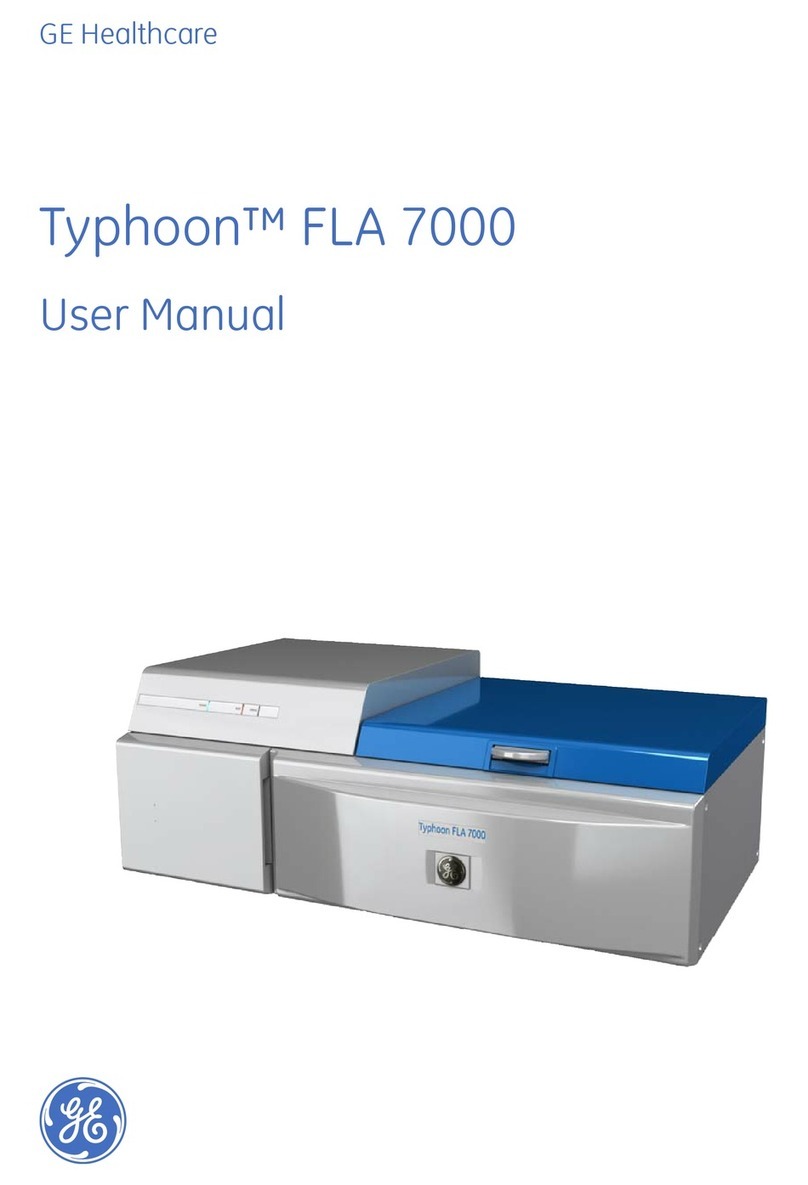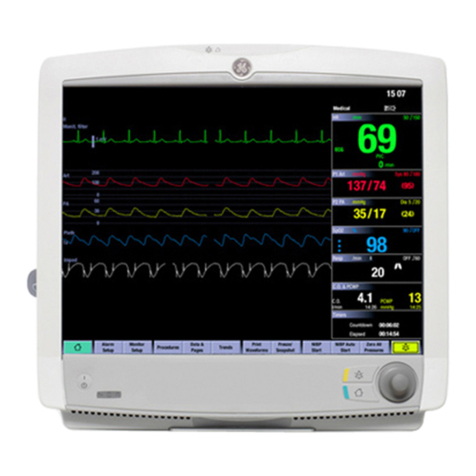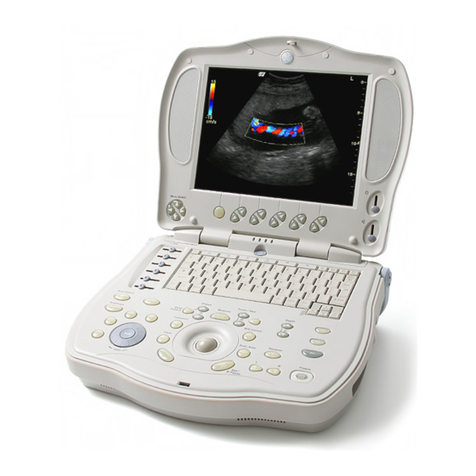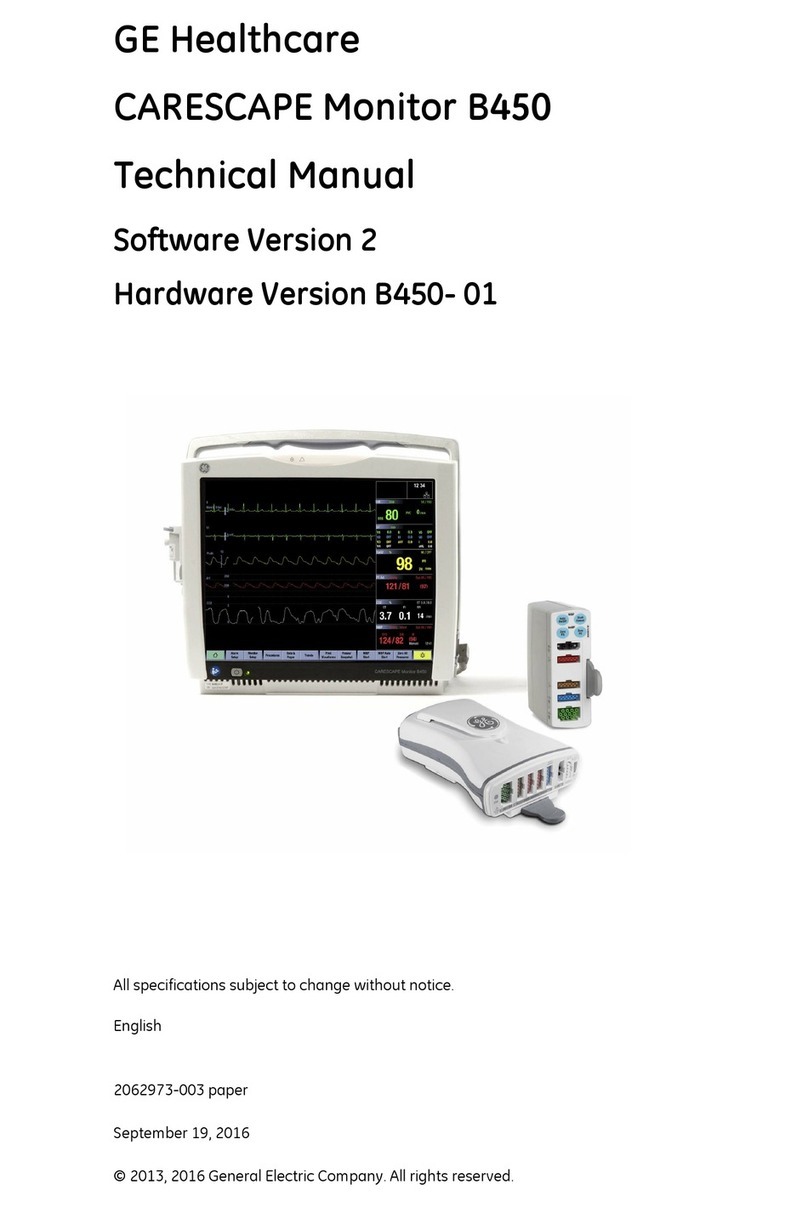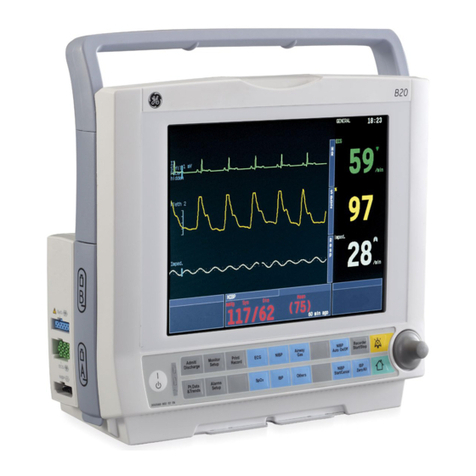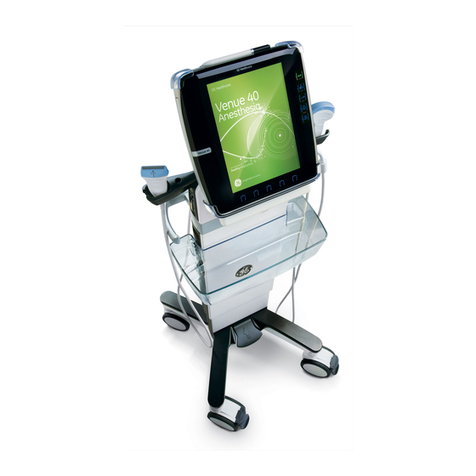
Important user information
All users must read this entire manual to fully understand the safe use of
Ettan DALTsix Electrophoresis System.
WARNING!
The WARNING! sign highlights instructions that must be
followed to avoid personal injury. It is important not to
proceed until all stated conditions are met and clearly
understood.
CAUTION!
The CAUTION! sign highlights instructions that must be followed to avoid
damage to the product or other equipment. It is important not to proceed
until all stated conditions are met and clearly understood.
Note
The Note sign is used to indicate information important for trouble-free
and optimal use of the product.
CE Certifying
This product meets the requirements of applicable CE-directives. A copy of
the corresponding Declaration of Conformity is available on request.
The CE symbol and corresponding declaration of conformity, is valid for
the instrument when it is:
– used as a stand-alone unit, or
– connected to other CE-marked GE Healthcare instruments,
or
– connected to other products recommended or described in this manual,
and
– used in the same state as it was delivered from GE Healthcare except for
alterations described in this manual.
Recycling
This symbol indicates that the waste of electrical and
electronic equipment must not be disposed as unsorted
municipal waste and must be collected separately. Please
contact an authorized representative of the manufacturer for
information concerning the decommissioning of your
equipment.
WARNING!
This is a Class A product. In a domestic environment this product may
cause radio interference in which case the user may be required to take
adequate measures.
• Connect the instrument to a properly grounded electrical outlet.
• The safety lid must be firmly in place before power can be applied.
• Turn off the power to the gels before opening the safety lid.
• Do not connect the heat exchanger to a water tap or any other water
source with unregulated pressure that may exceed 82 kPa (12 PSI).
• Rinse and flush the tank and pumping system with distilled or
deionized water before and after use.
• Always disconnect the power cord before servicing.
• Do not run the circulation pump if the electrophoresis tank is empty.
• Do not operate with buffer temperature above 40 ºC. All plastic parts
are rated for 40 ºC continuous duty.
• Turn the buffer circulation pump on during electrophoresis to
minimize uneven heating even if not connected to a thermostatted
circulator.
• Connect the heat exchanger to an external thermostatted circulating
bath. Overheating will cause irreparable damage to the unit.
• Do not autoclave or boil this unit or any of its parts.
• Use care when lifting and moving the electrophoresis unit. It is best to
move the unit when empty.
• The casting unit, when filled with glass plates and gel solutions, is very
heavy. Use caution when trying to move or lift the caster.
• The protection provided by the equipment may be impaired if this
equipment is used in a manner not specified by the manufacturer.
• Only accessories and parts approved or supplied by GE Healthcare
may be used for operating, maintaining and servicing this product.
Unpacking, inventory, and set-up
Unwrap all packages carefully and compare contents with the packing list,
making sure all items arrived. If any part is missing, contact your local sales
office. Inspect all components for damage that may have occurred while
the unit was in transit. If any part appears damaged, contact the carrier
immediately. Be sure to keep all packing material for damage claims or to
use should it become necessary to return the unit.
Heat exchanger
The heat exchanger is built into the base of the separation tank. The white
alumina ceramic heat exchange surface is fragile and the user should
avoid dropping anything directly on surface.
When connected to a circulator bath, coolant passes through a serpentine
chamber beneath the ceramic plate. The thin ceramic permits rapid heat
exchange between the coolant and the buffer in the electrophoresis tank.
The ceramic plate is attached with silicone rubber adhesive. The heat
exchanger tubing connectors are 13-mm o.d.
The heat exchanger is rated to a maximum of 0.8 atmospheres above
ambient (12 psig). Do not connect it to a water tap. Connect only to coolant
sources with regulated pressure.
To connect the coolant tubing lines to the tank, remove the lid and the anode rack from
the tank and lay the tank fill-label (front) side down. Guide the free ends of the coolant
tubes through the holes in the tank base and slip them onto the plastic connector
fittings, then pull the collector collar onto the tubing to lock it in place. The end of the
tubing can be lubricated with glycerol or a mix of glycerol:water to ease the fit.
80649249AC.book Page 3 Monday, November 13, 2006 2:42 PM





















